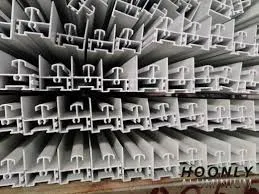Durable Cast Iron Collars and Bushings for Enhanced Mechanical Applications and Performance
The Significance of Cast Iron Collar and Bushings in Engineering Applications
Cast iron is a widely used material in various engineering applications due to its excellent mechanical properties, durability, and versatility. Among the many components that can be made from this robust material, cast iron collars and bushings play a crucial role in numerous industrial settings. Understanding their functions and advantages is essential for engineers and manufacturers seeking to optimize performance in their projects.
What are Cast Iron Collars and Bushings?
Cast iron collars and bushings are components typically utilized in machinery and structural applications. A collar is a ring-shaped piece that is used to provide support or to secure other components in place. Bushings, on the other hand, are cylindrical linings used to reduce friction between moving parts, facilitate alignment, and absorb shock loads. Both of these components can be manufactured through casting processes, making them cost-effective and suitable for mass production.
Advantages of Cast Iron
1. Durability Cast iron is renowned for its ability to withstand heavy loads and resist wear and tear. This characteristic makes it an ideal choice for collars and bushings that must endure demanding operational environments.
2. Shock Absorption The inherent damping properties of cast iron allow it to absorb vibrations and shocks, which is crucial in applications where machinery experiences sudden impacts or changes in load.
3. Corrosion Resistance Cast iron has a natural resistance to corrosion, particularly when coated or treated properly. This property extends the lifespan of components and reduces maintenance costs.
4. Ease of Machining Although cast iron is a robust material, it is relatively easy to machine compared to harder metals. This facilitates the customization of collars and bushings to meet specific engineering requirements.
cast iron collar and bushings

5. Cost-Effectiveness The casting process allows for the mass production of cast iron components at lower costs. This affordability makes it accessible for various industries, from automotive to construction.
Applications of Cast Iron Collars and Bushings
1. Machinery and Equipment In the manufacturing and assembly of machines, collars and bushings are critical for aligning shafts, reducing friction, and providing support. They are often found in gearboxes, pumps, and conveyors.
2. Automotive Industry Cast iron bushings are extensively used in vehicles to reduce vibrations and promote smooth operation in engine mounts and suspension systems. This enhances the ride quality and longevity of automotive components.
3. Construction Cast iron collars and bushings are employed in building applications, including piping systems, where they ensure the secure connection of pipes and reduce wear at joints.
4. Agricultural Machinery In agricultural equipment, cast iron parts are used to enhance durability and performance in harsh environments, where exposure to moisture and dirt is common.
Conclusion
In summary, cast iron collars and bushings are vital components that contribute significantly to the reliability and efficiency of various engineering applications. Their durability, shock absorption capabilities, corrosion resistance, and cost-effectiveness make them an indispensable choice in a wide range of industries. As technology continues to evolve, the role of cast iron in producing these components will likely remain strong, providing engineers with reliable solutions to complex design challenges. Understanding the properties and applications of cast iron collars and bushings not only highlights the material's advantages but also encourages further innovation in manufacturing techniques and uses across diverse sectors.
-
Wrought Iron Components: Timeless Elegance and Structural StrengthNewsJul.28,2025
-
Window Hardware Essentials: Rollers, Handles, and Locking SolutionsNewsJul.28,2025
-
Small Agricultural Processing Machines: Corn Threshers, Cassava Chippers, Grain Peelers & Chaff CuttersNewsJul.28,2025
-
Sliding Rollers: Smooth, Silent, and Built to LastNewsJul.28,2025
-
Cast Iron Stoves: Timeless Heating with Modern EfficiencyNewsJul.28,2025
-
Cast Iron Pipe and Fitting: Durable, Fire-Resistant Solutions for Plumbing and DrainageNewsJul.28,2025
-
 Wrought Iron Components: Timeless Elegance and Structural StrengthJul-28-2025Wrought Iron Components: Timeless Elegance and Structural Strength
Wrought Iron Components: Timeless Elegance and Structural StrengthJul-28-2025Wrought Iron Components: Timeless Elegance and Structural Strength -
 Window Hardware Essentials: Rollers, Handles, and Locking SolutionsJul-28-2025Window Hardware Essentials: Rollers, Handles, and Locking Solutions
Window Hardware Essentials: Rollers, Handles, and Locking SolutionsJul-28-2025Window Hardware Essentials: Rollers, Handles, and Locking Solutions -
 Small Agricultural Processing Machines: Corn Threshers, Cassava Chippers, Grain Peelers & Chaff CuttersJul-28-2025Small Agricultural Processing Machines: Corn Threshers, Cassava Chippers, Grain Peelers & Chaff Cutters
Small Agricultural Processing Machines: Corn Threshers, Cassava Chippers, Grain Peelers & Chaff CuttersJul-28-2025Small Agricultural Processing Machines: Corn Threshers, Cassava Chippers, Grain Peelers & Chaff Cutters












